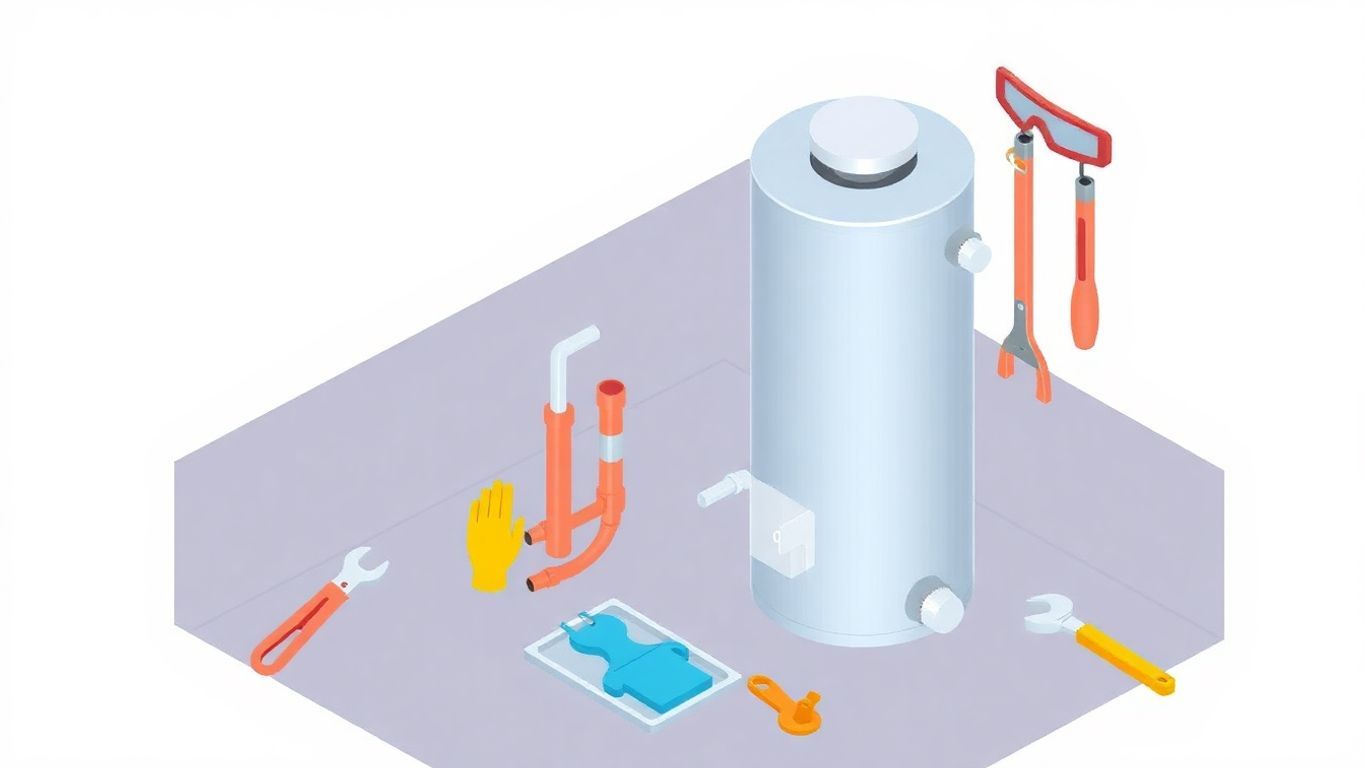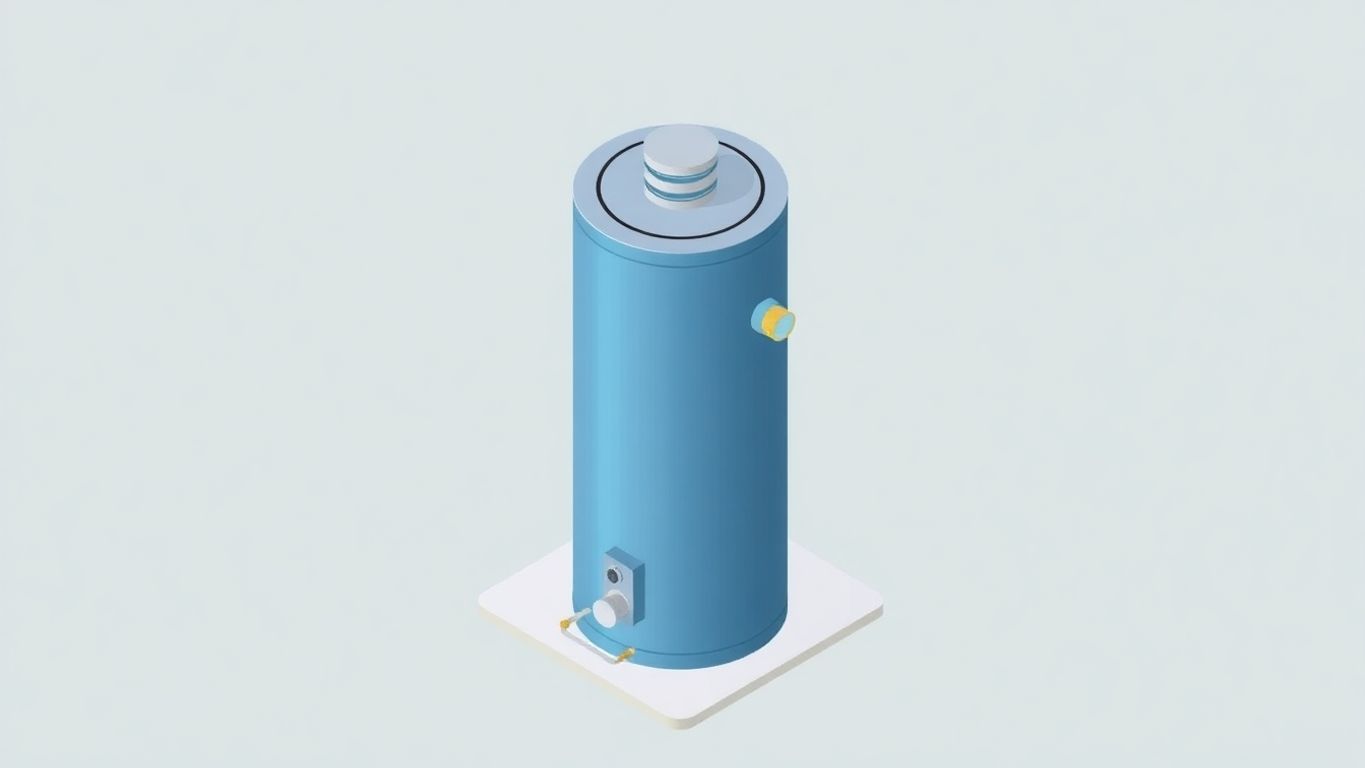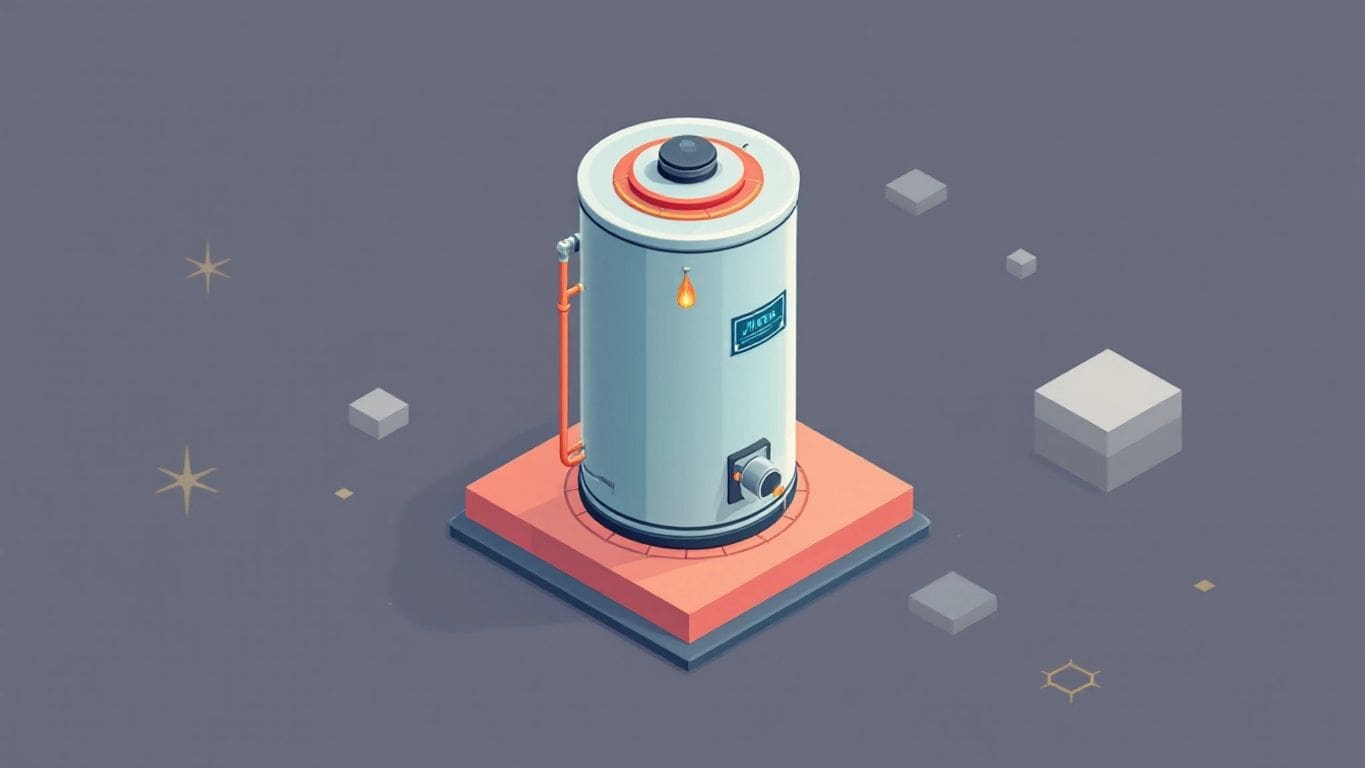If you’re facing issues with your gas water heater, you’re not alone. Many homeowners encounter problems with their water heaters at some point. This guide will help you understand how to fix gas water heater issues effectively and safely. You’ll learn about the parts of your heater, how it works, and what to do when things go wrong. Whether it’s a pilot light that won’t stay lit or water that’s too hot, we’ve got you covered with simple steps to troubleshoot and repair your unit.
Alright, let’s talk about what’s inside your gas water heater. It’s got a few key parts you should know. First, there’s the burner at the bottom. That’s where the gas gets burned to heat up the water. Then, there’s the tank itself, which holds the water. You’ll also find a thermostat, which is like a little brain that tells the heater when to turn on or off. And don’t forget the pilot light, a tiny flame that keeps things ready to fire up. Knowing these parts can really help you figure out what’s going wrong when things don’t work right.
So, how does this thing actually heat your water? It’s pretty simple. The gas burner at the bottom heats up the water in the tank. The thermostat keeps track of the water temperature. When the water cools down, the thermostat tells the burner to turn on and heat the water back up. It’s like a cycle that keeps going, so you have hot water whenever you need it.
Gas water heaters can run into a few common problems. Sometimes, the pilot light goes out, which means no hot water. Other times, the thermostat might not be working right, making your water too hot or too cold. And then there’s sediment build-up at the bottom of the tank, which can make your heater less efficient. Keeping an eye on these things can save you a lot of trouble down the road.
A little understanding goes a long way. Knowing the basics about your gas water heater can help you spot problems early and maybe even fix them yourself. It’s not just about having hot water; it’s about keeping things running smoothly and safely.

Before you dive into fixing your gas water heater, safety comes first. It’s super important to keep yourself safe while working. Here’s what you need to do:
Remember, safety gear isn’t just for looks. It’s there to keep you safe while you work on your heater. Always put safety first before diving into any repairs.
Figuring out what’s wrong with your gas water heater can seem tricky, but it’s not too bad once you know what to look for. Let’s break it down.
First things first, you gotta make sure there aren’t any gas leaks. This is super important for safety. Here’s how you can do it:
If you find a leak, stop and call a pro. Don’t mess with gas leaks.
Next up, check the pilot light. It’s a tiny flame that keeps your heater running. If it’s out, your water might not heat up.
Finally, let’s see if the thermostat’s working right. This little gadget controls the water temperature.
Always remember, if you’re unsure about any step, it’s okay to ask for help. Better safe than sorry!
Alright, so your water heater’s pilot light is out. No biggie, you can fix it. Just follow these steps:
If it stays lit, you’ve done it! If not, you might need to try again.
Sometimes, dirt clogs up the pilot orifice, causing trouble. Here’s how to clean it:
If your pilot light keeps going out, the thermocouple might be bad. This part tells the gas valve to stay open when the pilot is lit. Here’s how to swap it out:
Remember, if these steps feel too tricky or if things aren’t working out, it might be time to call a pro. Better safe than sorry, right?
If your water heater is over 16 years old, it might be time to consider an upgrade. New models are more energy-efficient and could save you some cash on those energy bills.
First things first, you gotta check if the thermostat is working right. A thermostat controls the water temperature. If it’s off, the water might be too hot or too cold. Here’s how you can test it:
If the water’s too hot or cold, the thermostat settings might be off. You can fix this by adjusting the temperature dial. Turn it to a temperature you like. Remember, 120 degrees Fahrenheit is usually a good setting.
Sometimes, the thermostat just doesn’t work anymore. If testing shows it’s broken, you gotta replace it. Here’s what to do:
Replacing a thermostat might seem tricky, but with patience, you can do it. If you’re not sure, it’s okay to ask for help. It’s better to be safe than sorry.
Sometimes, the water isn’t hot enough or maybe it’s too hot. First thing, check the temperature dial on your water heater. Give it a little twist to adjust the heat. It’s usually a knob you can turn. Try setting it around 120 degrees Fahrenheit. That’s a good spot for most folks.
Over time, gunk builds up in the tank. This can mess with the water temperature. To fix it, you gotta flush the tank. Here’s how:
This helps get rid of the sediment that can cause problems.
If the water cools down too fast, insulating the pipes might help. Wrap some pipe insulation around them. This keeps the heat from escaping. It’s like giving your pipes a warm coat.
Water heaters can be tricky. But with a little care, you can keep them running smoothly. If things get too tough, don’t hesitate to reach out to a pro. Remember, it’s better to be safe than sorry!
If your water looks rusty or brown, it’s time to flush the system. This happens because of sediment build-up. Here’s how you can do it:
Doing this can help clear out the gunk.
The anode rod protects the tank from rust. Over time, it wears out. To check it:
Keeping the rod in good shape helps keep your water clear.
Sometimes, parts inside the heater get rusty. This can mess with your water color. Look for signs of rust on fittings and pipes. If you find any, replace them. It’s usually a good idea to check these parts during regular maintenance.
Regularly checking these parts can save you from bigger problems later on. It’s like giving your heater a little TLC to keep it running smoothly.
So, your water heater is making weird sounds, huh? It can be a bit spooky, but don’t worry. First, you gotta figure out where the noise is coming from. Is it a banging, popping, or maybe a hissing sound? Each noise can mean something different. Banging noises usually mean there’s sediment build-up. Popping sounds might be trapped air bubbles. Hissing? That could be a leak.
Once you know what’s causing the noise, you can start fixing it. Loose parts can make a racket, so grab a wrench and tighten things up. Check the screws and bolts on the heater. If they’re loose, give ’em a twist. This could stop the noise and keep things from falling apart.
Sediment is just a fancy word for the stuff that settles at the bottom of your tank. Over time, it can cause popping sounds. To fix this, you need to flush the tank. Here’s how:
Flushing the tank gets rid of the sediment and might just stop those annoying sounds.
Sometimes, a little noise is normal. But if it’s loud and constant, it’s time to take action. Keeping your water heater in good shape means less noise and more hot showers.
So, there you go. A bit of tightening, a little cleaning, and your water heater should be quieter than a mouse. If the noise keeps up, you might need to call in a pro. But hey, at least you tried!
Wrapping your water heater with a special blanket can keep the heat in, so it doesn’t have to work so hard. This is especially useful if your heater is in a cold spot like a garage. You can find these blankets at most home improvement stores. A simple blanket can save you money by reducing heat loss.
Keeping your water heater in tip-top shape isn’t too hard. Here’s what you can do:
A little maintenance goes a long way in keeping your heater running smoothly and can prevent big problems down the line.
Sometimes, the best way to save energy is to get a new heater. If your current one is over 10 years old or needs a lot of repairs, it might be time to think about upgrading to a newer model. Newer models use less energy and can save you money on your bill. Plus, they often have cool features like digital displays and better temperature controls.

Sometimes, things get tricky. If your water heater’s acting up and you can’t figure it out, it might be time to call in the experts. Don’t risk making things worse. Here are some signs you need help:
Before you grab the phone, check your warranty. It might cover repairs or replacements. This could save you some bucks.
Okay, so you need a pro. But who to call? Here’s how to find the right one:
Sometimes, trying to fix it yourself can lead to more headaches. It’s okay to ask for help. A good technician can make sure everything’s safe and sound.
Getting a professional to handle the tough stuff can be a smart move. It keeps you safe and your water heater working right. So, don’t hesitate if things get out of hand. Better safe than sorry, right?
If your gas water heater isn’t heating, first check if the pilot light is on. If it’s out, try relighting it. If that doesn’t work, there might be an issue with the thermostat or gas supply.
To check for a gas leak, smell for a rotten egg odor near the heater. You can also use soapy water on the connections; if you see bubbles, there’s a leak.
Yes, it’s generally safe to relight the pilot light yourself, but be sure to follow the manufacturer’s instructions. If you’re unsure, ask a professional for help.
Water discoloration can happen due to rust or sediment in the tank. Flushing the tank or checking the anode rod can help fix this problem.
You should flush your water heater at least once a year to remove sediment buildup and keep it running efficiently.
If your water temperature is inconsistent or you can’t adjust it properly, it might be time to replace your thermostat.
Yes! You can improve efficiency by insulating pipes, installing a water heater blanket, and scheduling regular maintenance.
If you notice complex issues, like gas leaks or persistent problems after troubleshooting, it’s best to call a qualified technician.


